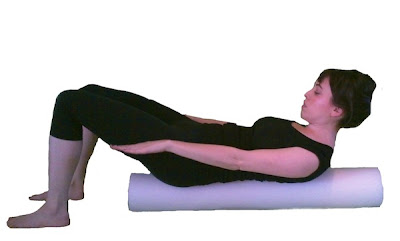This exercise is the closest preparation exercise for the classic pilates exercise of The Hundred.
To do this exercise you will need a mat. Start by lying on your back with your legs long beneath you. Inhale as you float your arms toward the ceiling and exhale as you press your hands toward the ground, narrow your ribcage, press your ribcage into the ground and lift your head, neck, and shoulders into the air. Inhale into the back of your ribs and exhale again as you reach through the bottom of your heels, connect the sacrum to the ground and allow your legs to float into the air just two inches. Take one for full breath and then exhale as you lower everything back to the ground. Repeat 6-8 times
Things to think about
If you have osteoporosis you should not do this exercise. Because your head balances the feet in this bow position, it is better to simply practice the arm work and the breath pattern with the knees bent or in a table top position.
To get the floating sensation it is important to connect the back of your ribcage to the ground and to connect your sacrum to the ground. These connections to the ground allow the body to find the strength necessary to feel the sensation of floating in the upper and lower extremities!





























